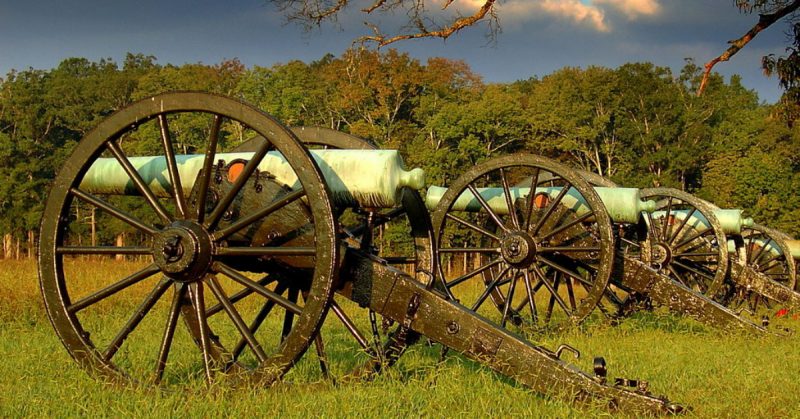Famous for his victories in the Western Theatre, Major General William S. Rosecrans became the subject of public criticism after he suffered a resounding defeat in the battle that brought a sudden end to the Chickamauga Campaign on September 20th, 1863.
Beginning on August 21st, the campaign bore great expectations for “Old Rosy,” especially after his success driving the Confederate General Braxton Bragg and the Army of Tennessee out of their stronghold in the mountains of Middle Tennessee during the Tullahoma Campaign.
Rosecrans felt that his achievements were not properly celebrated because his accomplishment was overshadowed by the much larger victories of the Union Army at Gettysburg and Vicksburg that occurred more or less in the same week.
Feeling cheated of his position in the spotlight, the Ohio-born General sought to attain yet another victory for the Union Army: one that would not be so easily overlooked.
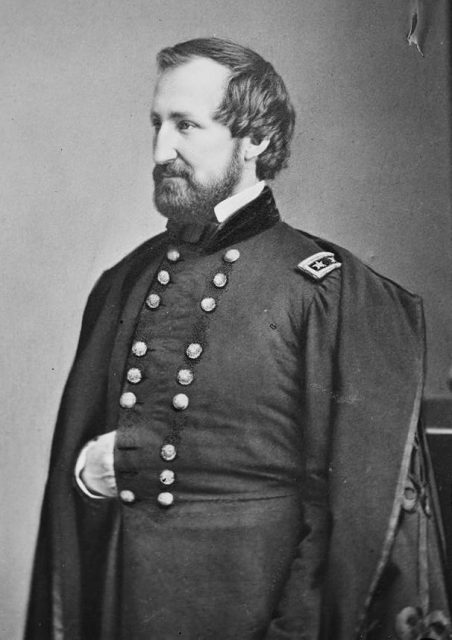
It was this determination that led to his quest to push the Confederates out of Chattanooga and into Georgia, facing the same confederate commander who he had defeated only a month ago. He was also under a lot of pressure from his superiors to continue his advance.
Rosecrans succeeded in forcing off Bragg’s army, and by September 6th, the Confederate forces had retreated into northern Georgia.
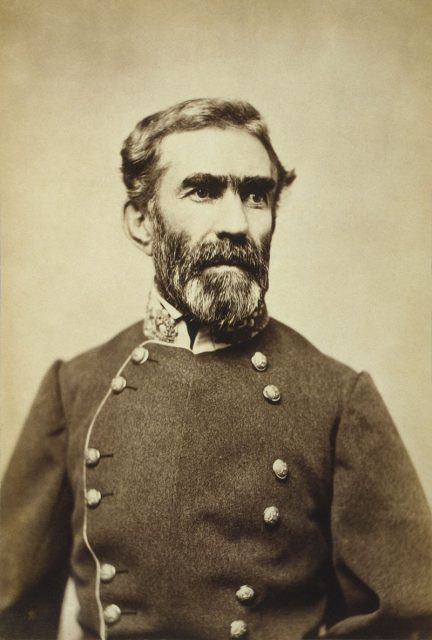
Old Rosy had become a thorn in Bragg’s flesh as he was constantly reducing Bragg’s military reputation with every engagement. Facing animosities from other high-ranking officers under his command, Bragg could only hope for a mistake on the part of his bane, and, as fate would have it, he got his wish.
After successfully driving the Confederates out of the city, Rosecrans assumed their commanding officer had been beaten and would continue his retreat further south. He separated his army into three distinct units and spread them out across Tennessee and Georgia.
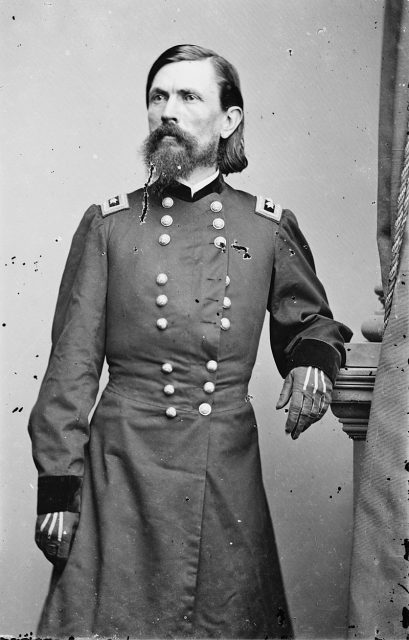
He realized his mistake when one of the commanding officers, Major General Thomas Leonidas, Crittenden’s Corps, was assaulted by a rebel cavalry at 3 PM on September 17th near Davis’s Cross Roads.
Rosecrans’s initial strategy was one of offense, but, after learning of Bragg’s reinforcements and military strategies, he immediately changed to a more defensive approach to maintain his hold on Chickamauga.
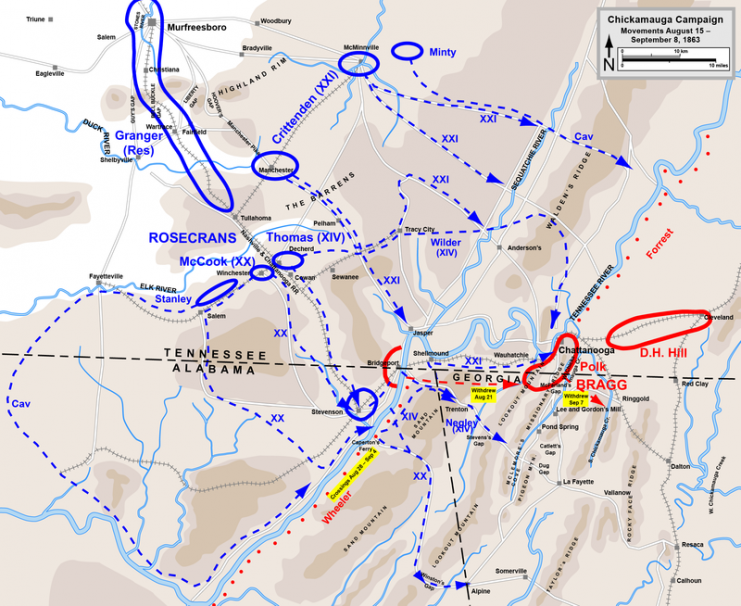
The terrain at the “River of Death” were not especially favorable to either side, and both commanders sought to avoid fighting in the huge expanse of thickets in the forests surrounding West Chickamauga Creek.
Constantly colliding with each other, battle lines were faint because the visibility in the area was limited to about 150 feet. This was not even enough to cover a rifle shot.
Rosecrans was of the erroneous opinion that the Confederate army still lay east of Chickamauga Creek. However, in reality, the enemy troops had already begun crossing the water and were quickly gaining on their position.
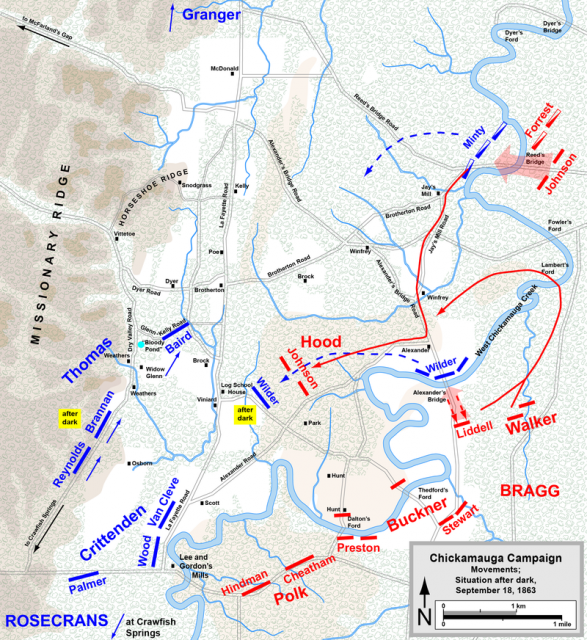
Early in the morning of September 19th, Bragg had already gained reinforcements at Lafayette Georgia and was poised to launch an attack on Rosecrans’s army to reclaim the city of Chattanooga.
After a series of assaults on the Union lines at Lafayette Road, James Longstreet successfully captured Viniard Farm while Major General Alexander P. Stewart pressed his assault with a concatenation of attacks at the Brotherton Cabin.
The Confederates now seemed to be gaining an advantage over the Federals, and this made Rosecrans nervous. He sent orders to Major General McCook to dispatch a brigade from General Phil Sheridan’s division in support of the Federals that were under attack at the Viniard Farm.
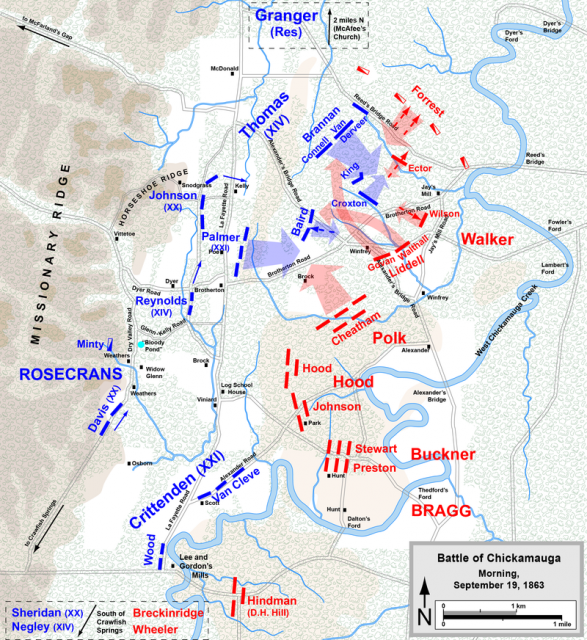
McCook responded by sending not one but two brigades: Colonel Luther Bradley’s Third brigade at the lead and Colonel Bernard Laiboldt followed at the rear. The weary Federals became ecstatic when they saw Sheridan’s approaching division, hailing “Make way for Sheridan!”
The division made headway and successfully repulsed the assaults by Stewart and General John Bell Hood, providing momentary relief to the Federals, who were already being overwhelmed.
Meanwhile, a part of Sheridan’s division, a brigade under the command of William H. Lytle, proceeded to Lee and Gordon’s Mills where they engaged Confederate skirmishers and successfully drove them out of the area.
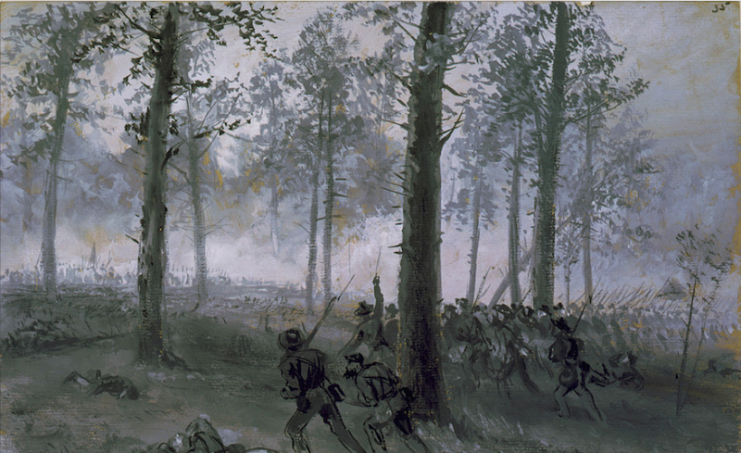
The fighting continued until night time. Exhausted and with a large count of casualties, both armies ceased hostilities and tended to their wounded. Bradley had sustained some injuries during the battle and was being attended to alongside many other Federals.
That night, the Federals prepared trenches to solidify their positions and prepare their defenses against further assault, which was expected to take place with greater force the next day.
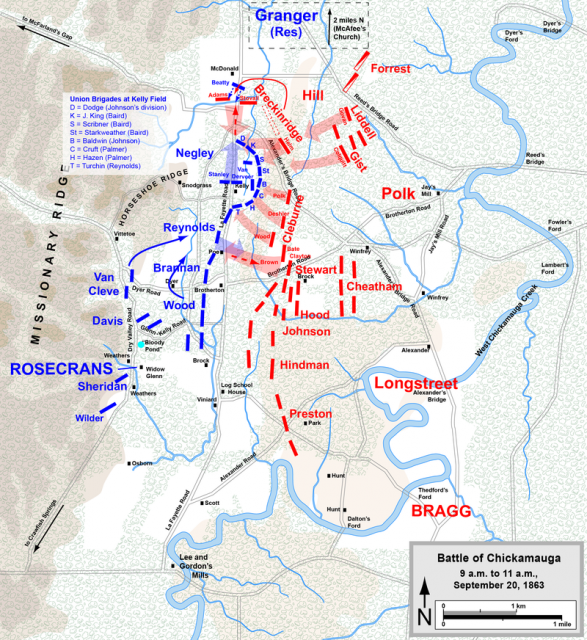
Rosecrans did not get much sleep that night. Thoughts of the severity of the day’s battle and anticipation of the next made him terribly uneasy, and the council of war meeting that he had just concluded did little to calm the waters of his mind.
September 20th arrived with a repetition of the previous day. At 9:00 AM, the Union lines were once again assaulted and probed by the unrelenting Confederates. With a stroke of luck and some tension, Rosecrans made a terrible mistake.
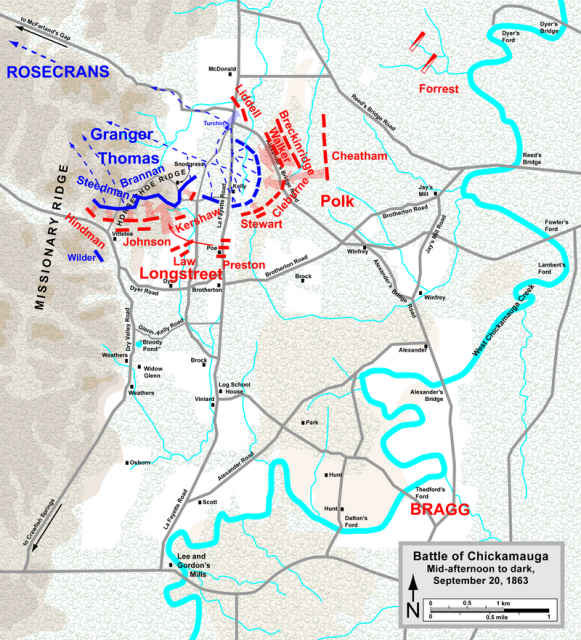
A report was given to him that stated a deficit in his lines, and, without bothering to verify the authenticity of the news, he gave orders to General Thomas Wood to bridge the gap that had been created, fearing that the enemy would surely capitalize on such a mistake.
In reality, there was no gap in the lines. Because of the problems with visibility in the area, a division had appeared to be absent. Still unaware of the precarious situation facing the Union lines, James Longstreet’s fully prepared assault chanced on the gap that Woods’s division left in the move and they surely exploited it.
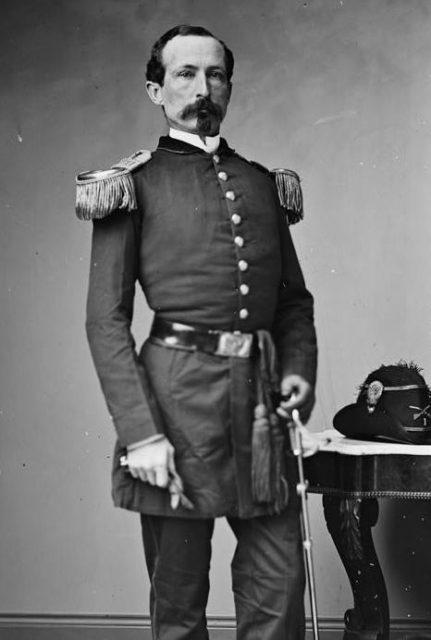
Longstreet’s charge infiltrated the Federal lines and the Union troops panicked, fleeing the battlefield as a ferocious onslaught began. When Rosecrans learned of the situation, he promptly withdrew back towards Chattanooga fearing for his safety, and he abandoned his troops.
Longstreet’s troops, weary from the day’s fighting, sought to seal their victory when they faced resistance under the command of Union General George H. Thomas at Horseshoe Ridge. Despite the pandemonium and chaos that followed Longstreet’s breakthrough, Thomas remained unhindered and ordered for defensive preparations to be set up on Snodgrass Hill.
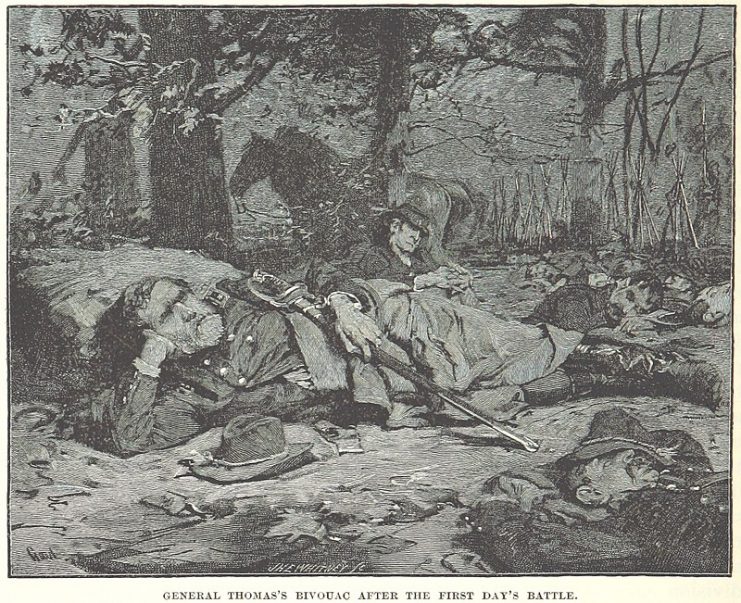
With assistance from Colonel John T. Wilder, whose infantry managed to slow down Longstreet’s advance and allow Thomas enough time to organize his lines, Thomas’s troops repulsed any further advance by the Confederates for the rest of the day. This earned him the title of “The Rock of Chickamauga.”
Both armies sustained combined casualties of over 30,000 during the battle, making it the bloodiest battle of the Western Theater of the Civil War.
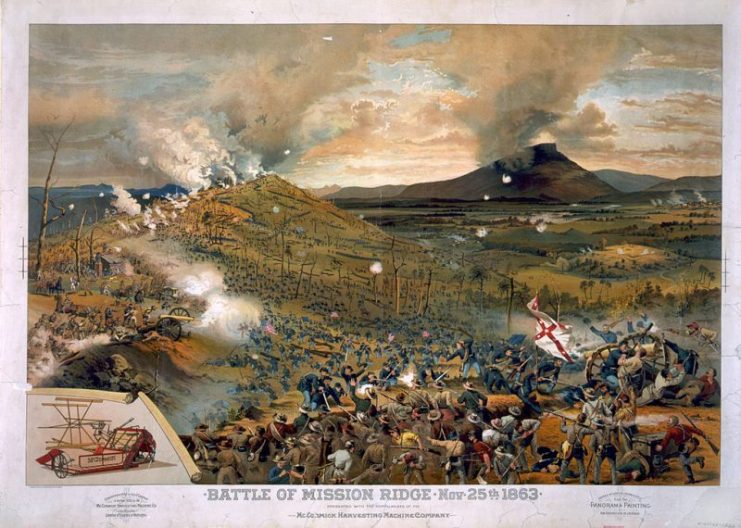
Read another story from us: Some Of The Deadliest Battles Of The American Civil War
The Union Army of Cumberland was defeated and Rosecrans was later relieved of his command.
However, Bragg’s refusal to pursue the fleeing Federals turned out to be his undoing, as a more organized Union Force saw to the permanent eviction of the Confederates from the city only two months later.
